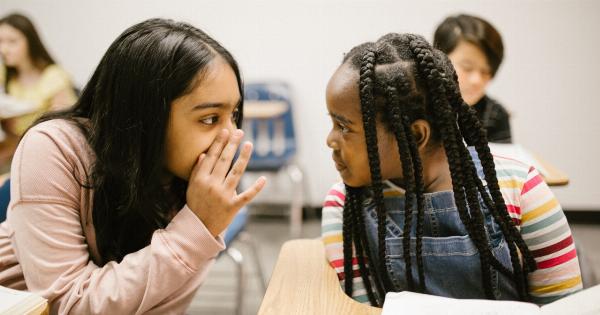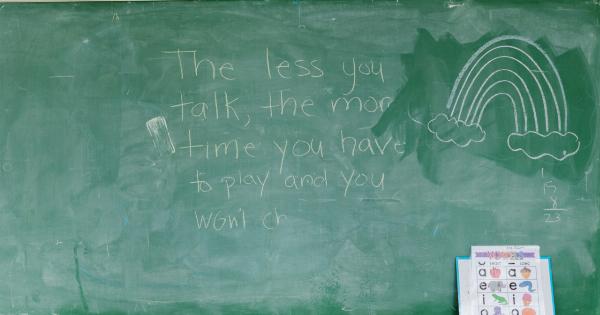Bullying at school is a pervasive issue that affects the well-being and academic success of many students. As parents and teachers, it is crucial to address this problem effectively to create a safe and inclusive learning environment for all.
This article aims to provide a roadmap for parents and teachers on how to deal with bullying at school, including understanding the signs, implementing prevention strategies, intervening when necessary, and providing appropriate support to students.
Understanding Bullying
Before addressing bullying, it is essential to have a clear understanding of what it entails. Bullying is a repeated aggressive behavior that involves a power imbalance between the perpetrator and the victim.
It can take various forms, such as physical, verbal, relational, or cyberbullying. Bullying can result in severe consequences, including emotional distress, decreased self-esteem, academic difficulties, and even physical harm.
Recognizing the Signs
Recognizing the signs of bullying is crucial for parents and teachers to identify potential victims or perpetrators. Some common signs include:.
- Unexplained injuries
- Lost or damaged belongings
- Changes in eating or sleeping patterns
- Unexplained drop in academic performance
- Withdrawal from friends and social activities
- Increased anxiety or depression
- Frequent complaints of physical symptoms, such as headaches or stomachaches
If these signs are observed, it is important to take them seriously and investigate further to determine if bullying is occurring.
Prevention Strategies
Preventing bullying requires a collaborative effort from parents, teachers, and students. Some effective prevention strategies include:.
- Promoting a positive and inclusive school climate
- Teaching empathy and respect to students
- Implementing anti-bullying policies and rules
- Encouraging open communication and reporting
- Providing social-emotional learning programs
- Organizing awareness campaigns and workshops
By proactively addressing the issue, schools can create an environment that discourages bullying behaviors and cultivates empathy and acceptance.
Intervention
Despite prevention efforts, bullying incidents can still occur. When intervention is necessary, prompt and appropriate action is crucial. Here are some steps parents and teachers can take:.
- Listen to the victim and document the incidents
- Report the incident to the appropriate school staff or administration
- Conduct a thorough investigation to gather evidence
- Take disciplinary action against the perpetrator
- Provide support and counseling to the victim
- Implement safety measures, such as increased supervision and security
- Involve parents/guardians in the resolution process
- Monitor the situation to ensure it does not escalate
It is important for parents and teachers to collaborate closely during the intervention process to ensure a comprehensive and effective response.
Support Systems
Creating a support system for victims of bullying is vital in helping them cope with the emotional and psychological effects. Some support mechanisms include:.
- Providing access to counseling or therapy services
- Fostering peer support groups or mentoring programs
- Encouraging participation in extracurricular activities to enhance self-esteem
- Facilitating communication between parents and school staff
- Implementing restorative justice practices to promote empathy and understanding
By offering various forms of support, parents and teachers can empower victims to overcome the negative impact of bullying and regain their confidence.
Consequences for Bullying
Consequences for bullying should be clear and consistent to deter such behavior in schools. Some possible consequences include:.
- Verbal/written warning
- Suspension from school
- Loss of privileges, such as extracurricular activities
- Community service or restorative justice activities
- Referral to counseling or therapy
- Expulsion in severe cases
Effective consequences can send a strong message that bullying will not be tolerated and can help protect other students from experiencing similar mistreatment.
Building Strong Partnerships
Parents and teachers should work together to address bullying effectively. Establishing strong partnerships can enhance communication, share information, and collaborate on prevention and intervention strategies.
Regular meetings, workshops, and parent-teacher associations can serve as platforms for these collaborations.
The Role of Education
Education plays a pivotal role in addressing bullying at school. Teachers should incorporate anti-bullying education into their curriculum, fostering a culture of respect, empathy, and kindness.
Students should receive age-appropriate information about bullying and its impact, as well as learn appropriate ways to respond to such situations.
Additionally, teachers should be trained on how to detect bullying, deal with incidents appropriately, and provide necessary support to both victims and perpetrators.
Creating a Safe Learning Environment
A safe learning environment is essential for the well-being and academic success of all students.
By promoting a culture of respect and empathy, implementing effective prevention strategies, intervening promptly and appropriately, and providing robust support systems, parents and teachers can ensure a safe and inclusive school environment.
Conclusion
Bullying at school is a serious concern that requires a proactive and collaborative approach from parents and teachers.
By understanding the signs, implementing prevention strategies, intervening when necessary, offering support to victims, and delivering appropriate consequences, we can create an environment where all students can thrive. Together, we can build a future free from bullying and ensure that every child’s right to a safe and enjoyable education is protected.














